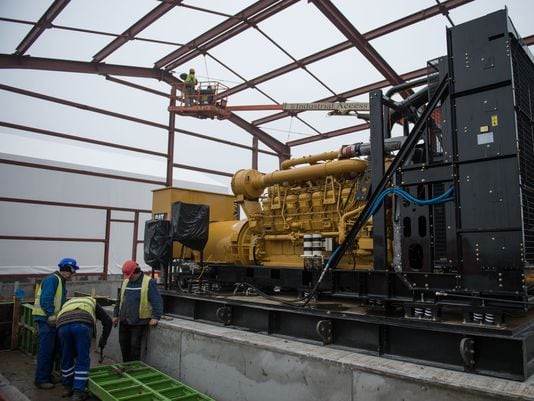The new ballistic missile defense site in Romania is set to come online Friday, as the Navy takes control of it after years of construction and prepares it to track and shoot down missiles bound for Europe.
The U.S. and Romania are expected to announce the radar site and missile battery has reached "technical capability" in a ceremony in Bucharest. The announcement means that all the radars, consoles, SM-3 interceptor missiles work and sailors who man it are trained and in place.
The site is not being declared "operational," said a defense official with knowledge of the announcement, because the land-based system still needs to be integrated into NATO's larger ballistic missile defense architecture, which has been a major Obama administration drive. The sea-based arm of the shield is provided by four BMD-capable destroyers forward-based in Rota, Spain. The Romania site should be declared operational this spring.
"The Aegis Ashore site in Romania is an important step in our efforts to protect against the growing threat posed by the proliferation of ballistic missiles of increasingly greater ranges, lethality, and sophistication," said Navy spokesman Lt. Cmdr. Timothy Hawkins. "The Romania site will provide a defensive capability to protect NATO Europe against ballistic missiles."
The missile base has been a source of tension between Russia and the United States. Russian President Vladimir Putin has criticized the program, saying it is an attempt to upset the strategic stalemate that deterred a nuclear exchange between the West and Russia during the Cold War.
The U.S. government has maintained that the shield in Romania, and its planned sister installation in Poland, is aimed at countering a nuclear threat from Iran — not Russia.
On Thursday, the head of Russia's strategic missile program said his country had developed a weapon that could "neutralize" the new missile shields, according to the Associated Press.
The missile site is located on an old, 430-acre Romanian air base and will be manned by sailors rotating through for six months at a time. It will be equipped with an Aegis SPY-1 radar system and a vertical-launch missile system armed with long-range anti-air missiles, which was estimated to cost $1 billion.
Much like the combat information center watch teams on surface combatants, the Aegis Ashore sites will be run round-the-clock by three crews.
Each shift has an 11-person watch team, including rates that typically work in a ship's combat information center: fire control technicians, operations specialists, and cryptologic technicians (technical). One watch officer will oversee them.
The Navy is deploying three of these specially trained watch teams for six months at a time. This will be an operational tour, similar to a ship's cruise, and won't come with permanent change-of-station orders or the possibility of bringing dependents to Romania.
Mission control of the Romania defense site will ultimately be transferred to NATO once it's fully operational, Hawkins said.
David B. Larter was the naval warfare reporter for Defense News.








